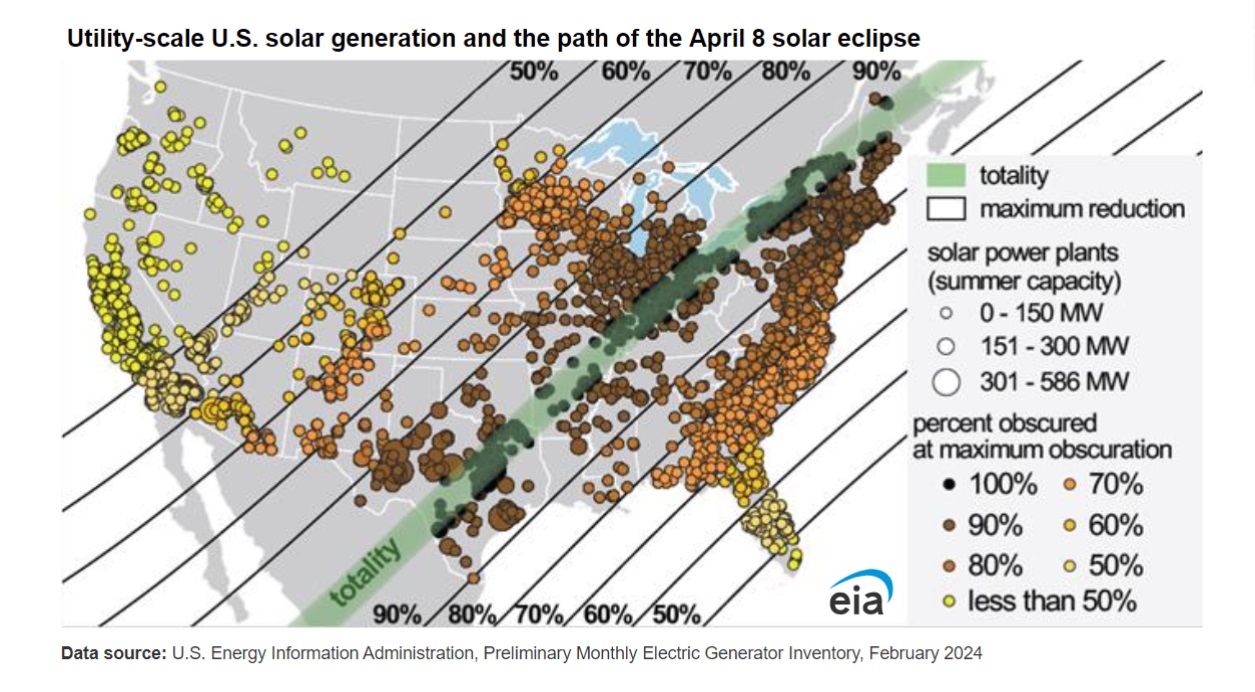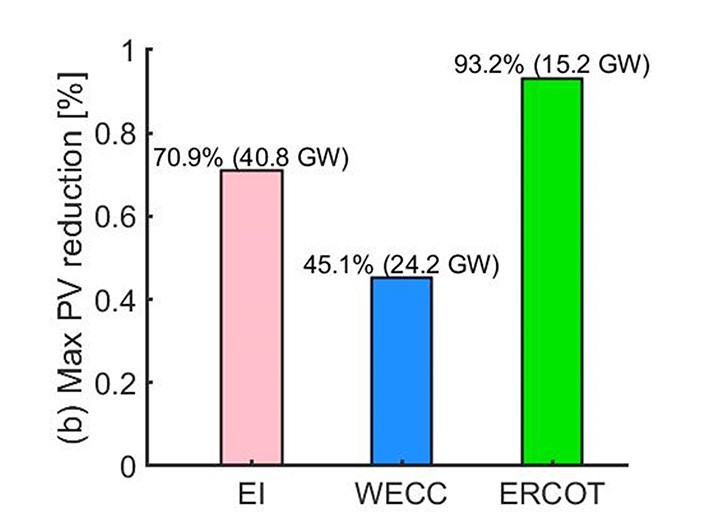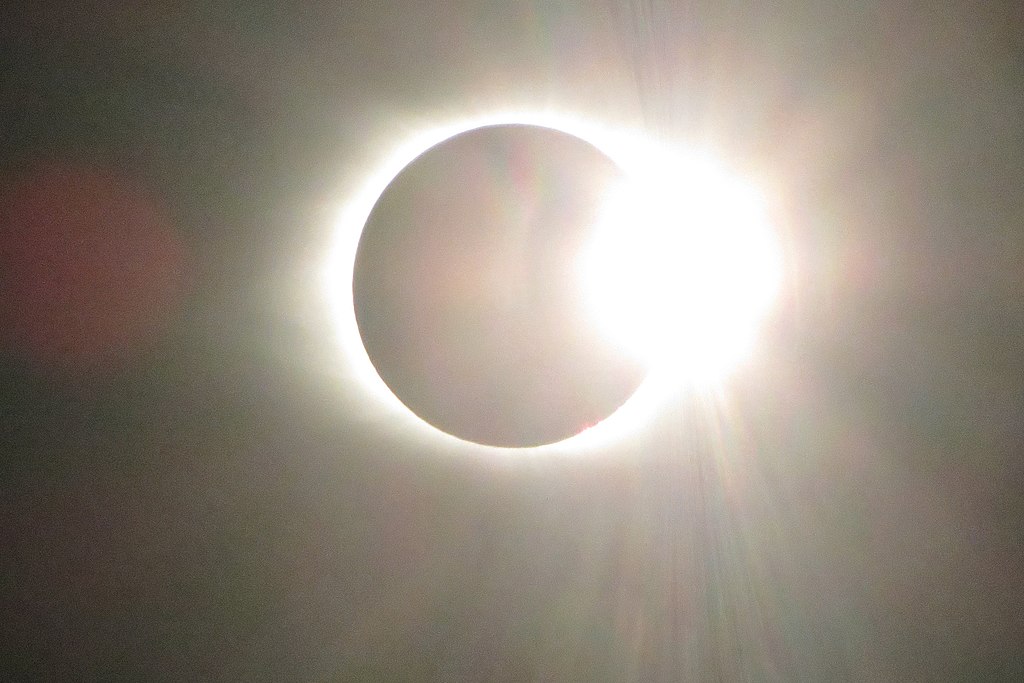How much solar will be impacted by the solar eclipse points out how far solar has grown in the U.S. since the last eclipse in 2017. The Energy Information Administration (EIA) estimates that a combined 6.5 GW of solar capacity lies in the path of the full solar eclipse, also called the path of totality, with 84.8 GW that will experience the partial eclipse
“Total solar installations in the U.S. have increased threefold in the last seven years,” explained Guohui Yuan of the Solar Energy Technologies Office, which sponsors this study. “On a typical spring sunny day, solar photovoltaics will generate about 30% of the electricity used in Texas.”
The 2017 eclipse didn’t have much effect on solar energy production, however, solar contributed only 1.3% to the electrical grid at that time, according to the EIA. The EIA estimates that solar will provide 6% of U.S. electricity generation this year—a significant increase over 2017, and enough to cause some concern about the eclipse effect.

NREL researchers have calculated the following maximum power reduction from solar photovoltaics in the three interconnection regions:
- East: 71%
- West: 45%
- Texas: 93%
While Texas will experience the greatest overall reduction during the eclipse, the Eastern region’s power grid will be most affected due to the number of power plants on that region’s grid.
The researchers also modeled every independent system operator region and individual balancing areas (roughly on a utility-by-utility scale) across the country.
Maximum PV Reduction

“A systematic study of the impacts of the eclipse will provide valuable insights for grid operators across the country as they prepare for extreme weather events,” said Marilyn Jayachandran of the North American Electric Reliability Corporation, a collaborator on the study.
The sun will be partially covered in major metropolitan areas for up to 3.5 hours and many in total darkness for as much as four minutes, requiring system operators to be prepared to meet a fast generation ramp rate. However, other weather events require that system operators build in enough diversity to energy systems so that utility customers will be ensured that there will not be a power outage.
Load rebalancing
How will they do this? While the researchers expect solar energy to decrease by 35.3 GWh during the time of the eclipse, assuming mostly sunny conditions across the country, the load will be rebalanced primarily by pumped hydropower storage (42%) and hydropower (24%), along with gas (30%), and a combination of oil-gas-steam (2%), and steam (2%).
Battery storage will also play a role by using stored solar and wind generation and discharging it when needed. The Energy Information Administration (EIA) estimates that 15.4 GW of battery storage is installed today in the U.S., compared to only 0.6 GW in 2017 during the last eclipse.
The ramp rates during the eclipse are expected to be two- to three-times higher than typical dawn and dusk ramp rates, NREL reports.
The U.S. Department of Energy Solar Energy Technologies Office, the National Renewable Energy Laboratory (NREL), and the North American Electric Reliability Corporation are evaluating the grid impacts and NREL will provide a livestream via Zoom, beginning at 1:30 p.m. ET.
pv magazine USA will report on the research team’s post-event analysis and the mitigation measures taken by grid operators.
This content is protected by copyright and may not be reused. If you want to cooperate with us and would like to reuse some of our content, please contact: editors@pv-magazine.com.









By submitting this form you agree to pv magazine using your data for the purposes of publishing your comment.
Your personal data will only be disclosed or otherwise transmitted to third parties for the purposes of spam filtering or if this is necessary for technical maintenance of the website. Any other transfer to third parties will not take place unless this is justified on the basis of applicable data protection regulations or if pv magazine is legally obliged to do so.
You may revoke this consent at any time with effect for the future, in which case your personal data will be deleted immediately. Otherwise, your data will be deleted if pv magazine has processed your request or the purpose of data storage is fulfilled.
Further information on data privacy can be found in our Data Protection Policy.